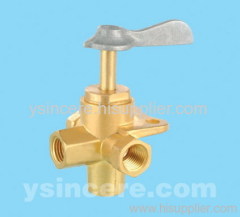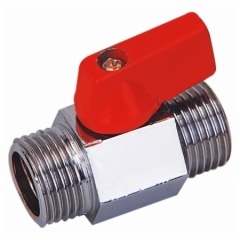.jpg)
FM Brass Ball Valve Aluminium Handle
| Min. Order: | 300 Set/Sets |
|---|---|
| Payment Terms: | T/T |
| Supply Ability: | 500SETS/ day |
| Place of Origin: | Zhejiang |
Company Profile
| Location: | Ningbo, Zhejiang, China (Mainland) |
|---|---|
| Business Type: | Trading Company |
| Main Products: | Adjustable Spanner, ANGLE VALVE, Shower Curtain Rod, Basic Faucet, Zinc Floor Drain |
Product Detail
| Model No.: | 1150 |
|---|---|
| Means of Transport: | FOB NINGB OR SHANGHAI |
| Power: | Hydraulic |
| Standard or Nonstandard: | Standard |
| Pressure: | Medium Pressure |
| Structure: | Ball |
| Material: | Brass |
| Temperature of Media: | Normal Temperature |
| Materials: | brass with steel hand |
| Production Capacity: | 500SETS/ day |
| Packing: | CARTONS |
Product Description
Ball valves are the three different types of rotary valves used in industrial plants. They are widely used in fluid-handling systems for flow control. These types of rotary valves are suitable for corrosive applications. They are used in detergent, pharmaceutical, chemical, rubber, pulp and paper plants, water treatment systems, textile mills and food processing plants, In general, ball valves offer many advantages when contrasted with other valve types. They provide superior ease of operation and can maintain and regulate high volume, high pressure and high temperature flow. Most ball valves offer rugged construction providing for a long service life, and a comparably low cost. Additionally, the design of the regulating element allows the valve to function without the complications of side loads, typical of butterfly or globe valves, and the valve design permits inspection and repair of seats and seals without removing the valves body from the pipeline.
As the name implies, are stop valves that use a ball to stop or start the flow. The ball performs the same function as the disc in the globe valve. Ball valves are normally used in the following system: seawater, sanitary, trim and drain, air, hydraulic, and oil treatment.
Technical specification
Nominal pressure:1.6Mpa
Working medium:Water, Oil, Steam
Working temperature:-20ºC≤t≤180ºC
| DN (mm) | SIZE | L (mm) | L1 (mm) | H (mm) |
| 9 | 3/8" | 47 | 70 | 43 |
| 14 | 1/2" | 47 | 80 | 45.5 |
| 19 | 3/4" | 60 | 95 | 53 |
| 23 | 1" | 60 | 105 | 58 |




.jpg)
.jpg)

.jpg)